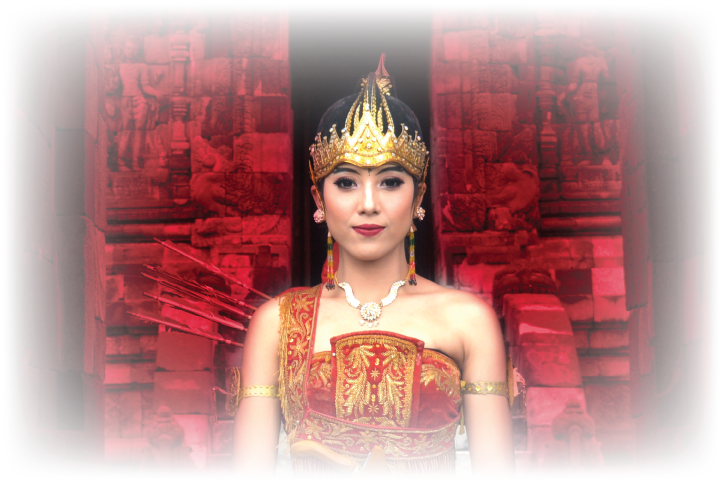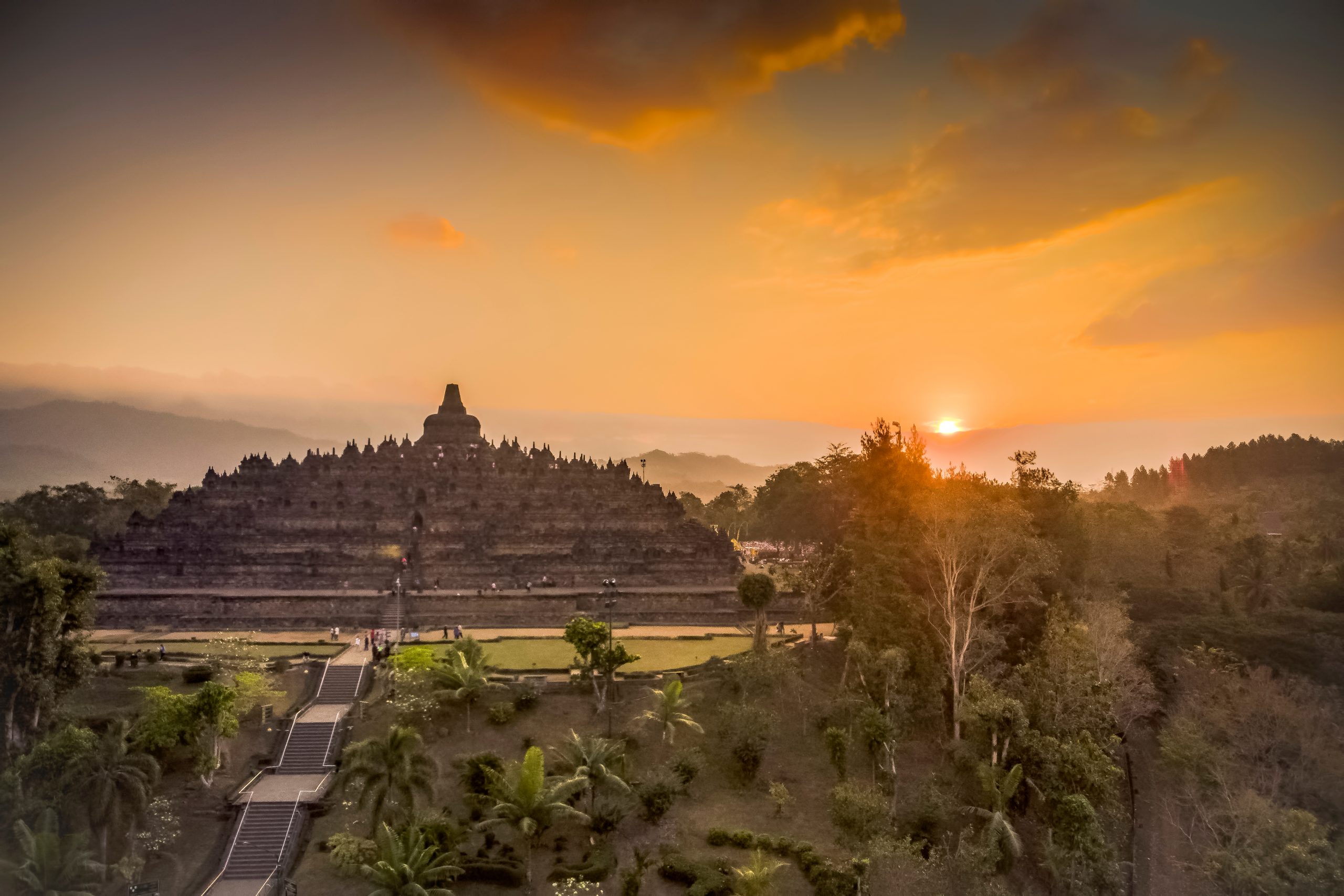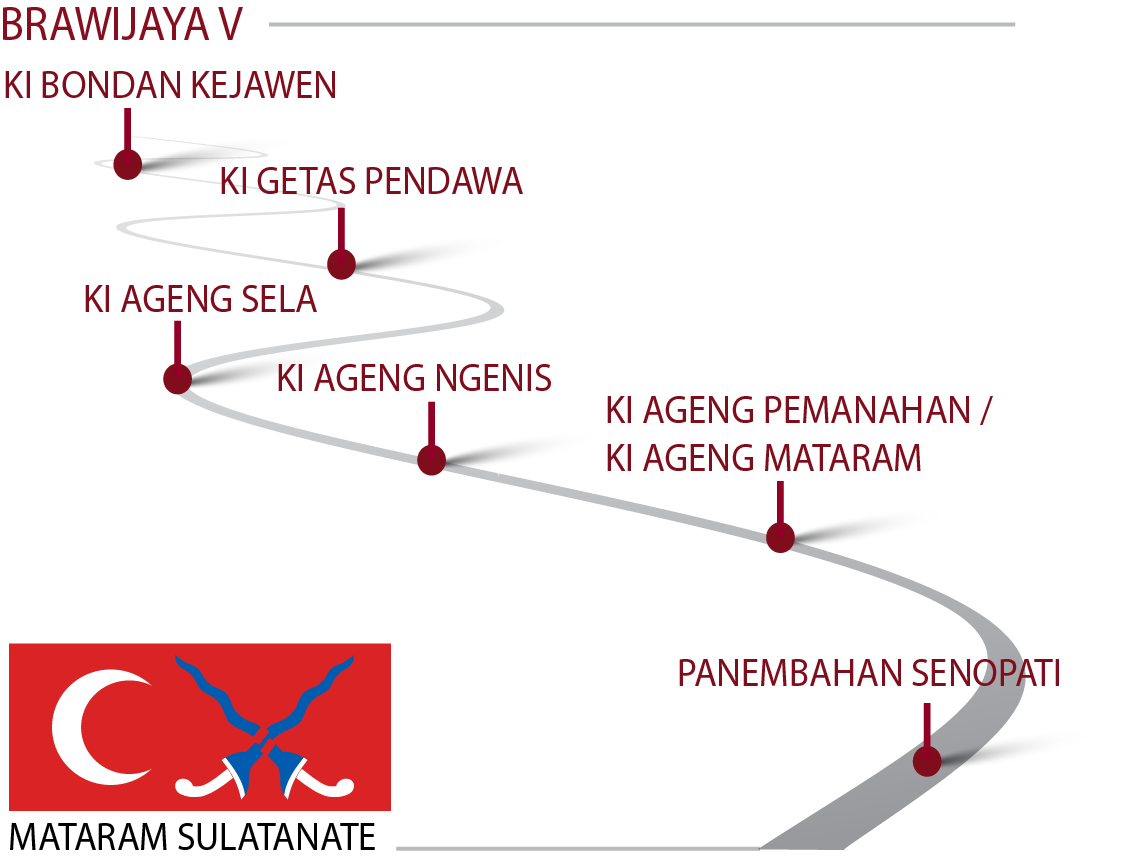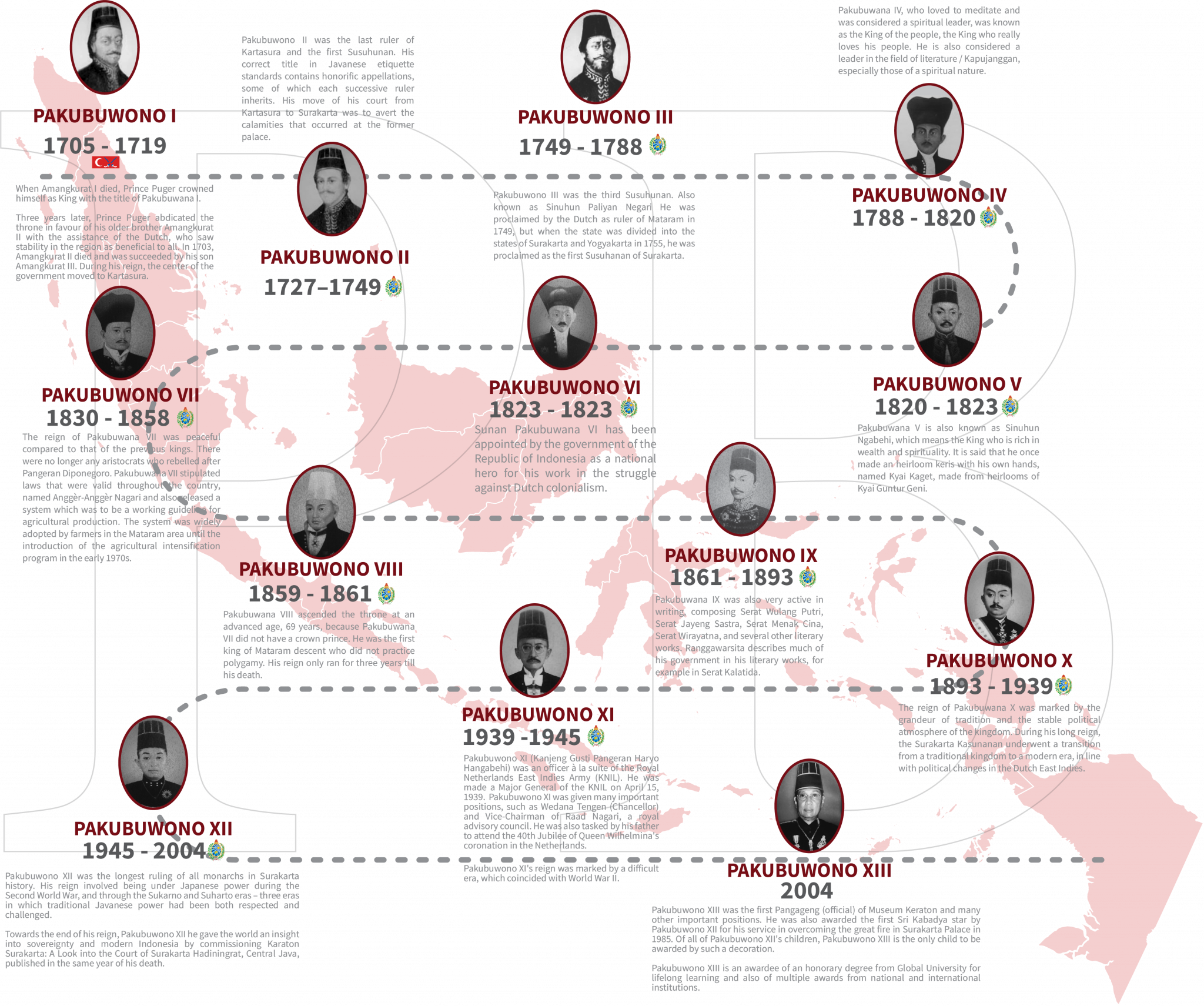He crowns himself as king with the title of Pakubuwana I.
Three years later, Prince Puger abdicated the throne in favour of his older brother Amangkurat II with the
assistance of the Dutch, who saw stability in the region as beneficial to all. In 1703, Amangkurat II died
and was succeeded by his son, Amangkurat III. During his reign, the centre of the government moved to
Kartasura.
When Amangkurat III died, the throne was passed back to P. Puger with the title of Pakubuwana I. When
Pakubuwana I died, his son, Amangkurat IV, took the throne but fell into illness. His son took the title
Pakubuwana II and was the last ruler of Kartasura and the first Susuhunan of Surakarta. He moved the centre
of government to Solo, the village of Sala, which later became the Karaton Surakarta Hadiningrat.
In 1749, after two years of war and then peace with the Chinese and the Dutch, Pakubuwana II’s son,
Pakubuwana III, succeeded his father, and peace reigned.




